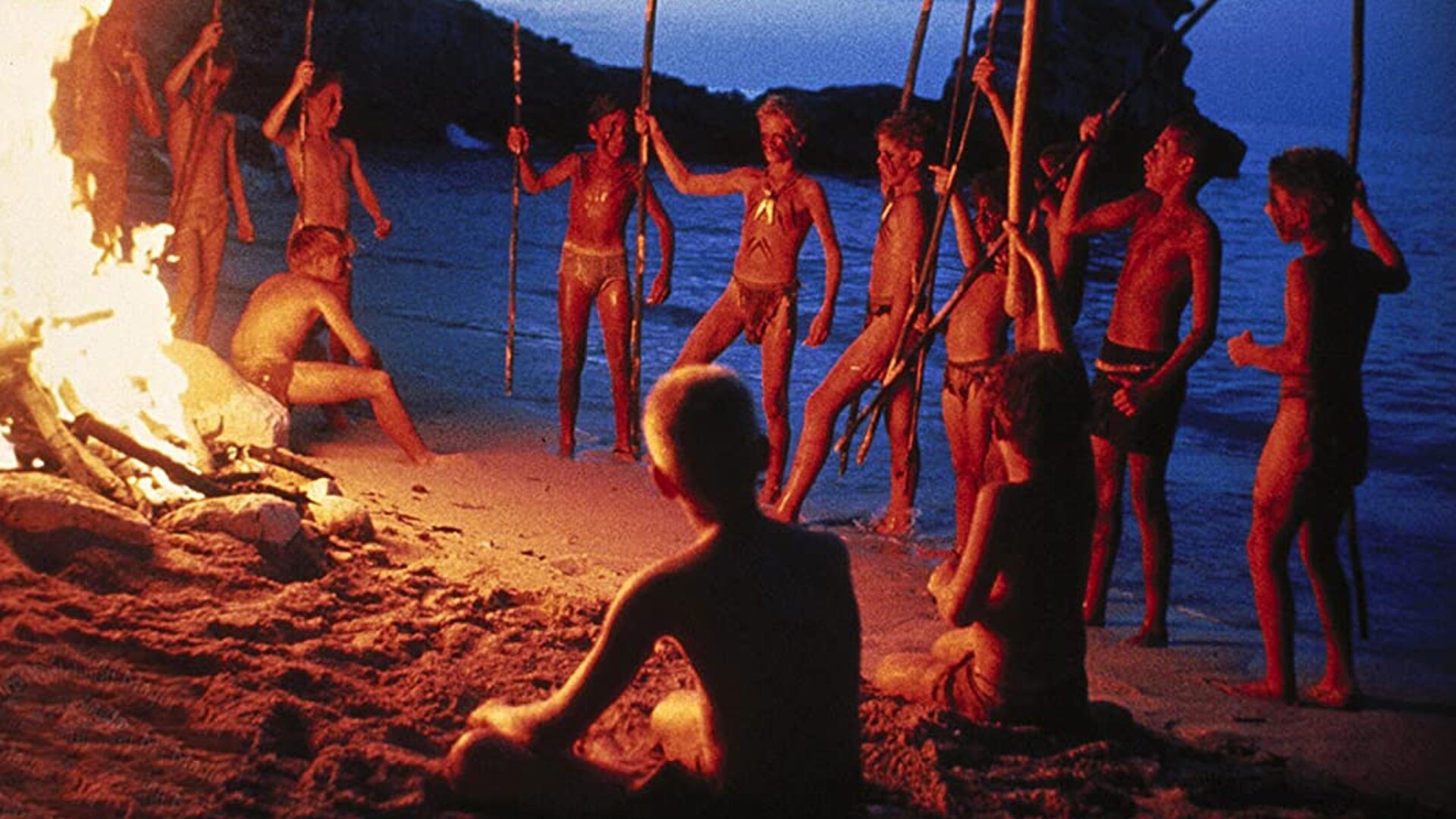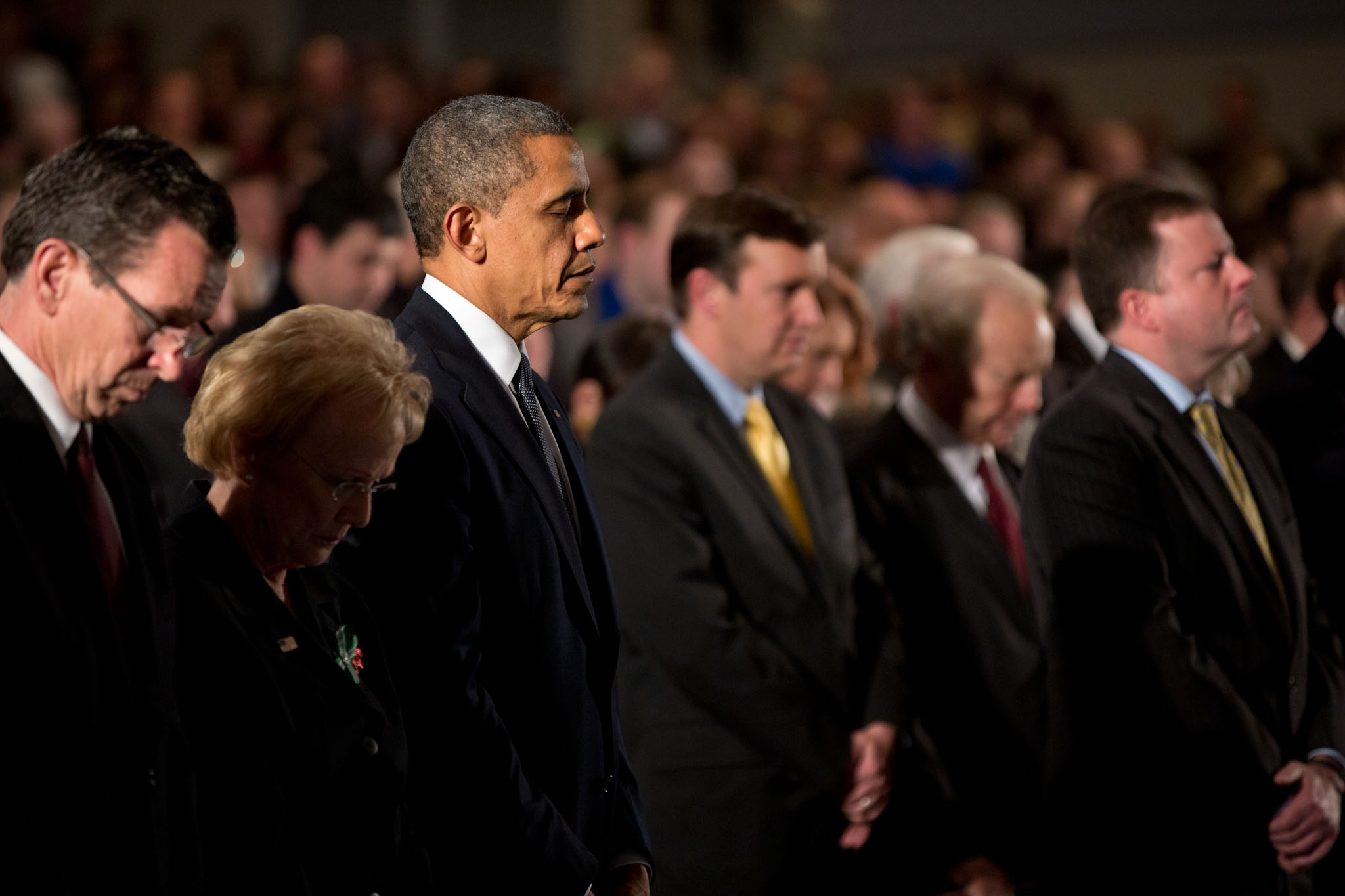Running Amok

By Thomas Lambert
Staff Writer
26/10/2021

English schoolboys go wild in the 1990 adaptation of Lord of the Flies
When Captain James Cook landed in Java in 1770, he badly needed respite. He was nearing the end of his first round-the-world voyage; his ship, HMS Endeavour, had been damaged in the shallow waters of the Torres strait, and half his crew was sick from malaria. The local Javanese, much to his delight, were friendly and solicitous, patching up his hull and tending to his shipmates without suspicion or hostility. Except, that was, for a very strange phenomenon. Every so often, with no apparent trigger or cause, a Javanese or Malay man with no history of violence would grab a knife or a pistol, run from his house, and begin, quite indiscriminately, to kill everyone in his path. The locals considered the violence supernatural – a result of possession by the “hantu belian,” or evil tiger spirit. There was no point in resisting, they said; men who succumbed were “gelap mata” (“men with black eyes”) – or, more commonly, “amok.”
Today, the phrase “running amok” is so common in English that its meaning has been diluted. Few who use it are aware of its grisly origins; it tends, instead to denote a general lack of institutional or personal restraint. In the years following Cook’s journey, however, the phenomenon of “amok” became famous. By the 19th century, British, French, Portuguese, and Dutch officials across Southeast Asia were reporting a veritable contagion of “amok” cases – not just in Java but Sumatra, Malaysia, and even as far afield as India and the Philippines. A clear profile began to develop: the perpetrator was invariably male, and usually of Javanese or Malay ethnicity. A personal trauma or loss of social prestige – a loss of income, an unfaithful spouse, the death of a relative – would precipitate a period of brooding, which would eventually bubble over into violence. If he survived the period of amok himself, the perpetrator would be drained, often entering a deep state of catatonia, or even sleep.
An early anthropological study reported the following case as entirely typical:
In 1846, in the province of Penang, Malaysia, a respectable elderly Malay man suddenly shot and killed 3 villagers and wounded 10 others. He was captured and brought to trial where evidence revealed that he had suddenly lost his wife and only child, and after his bereavement, he became mentally disturbed.
By 1849, “amok” had been officially defined by the medical community. Along with another similar pathology known as “beramok,” “amok” was designated a “culture-bound syndrome” – a strange set of symptoms that, by some opaque mixture of historical and social factors, was limited to people raised in a particular part of the world. Public curiosity was piqued. Why did such a “placid” people suddenly erupt in violence? Did tiger spirits really exist? And was it really “culture-bound” – or would the men with black eyes begin to appear in Paris, in Amsterdam, in London?
By the late 19th century, Western anthropology had launched a slew of investigations into the history of amok. Perhaps the most common of these was in Hobson-Jobson, a vast glossary of Anglo-Indian and South Asian terms penned by Messrs Yule, Burnell, and Crooke in 1886. According to Yule’s entry, the term “amok” (as well as its variants, amock, amuck, amuco, amaucos, and amocchi) was derived from Malayan word amar-kkan, or “warrior.” Early accounts of medieval honor cults in Southeast Asia made frequent reference to a warrior caste known as “Amocchi” and “Amoco,” renowned for their propensity for violence. A letter unearthed by Yule from the correspondence of Italian traveller and renaissance man Pietro de la Valle shows how the honor culture among this caste led to “amok”-style killing sprees as early as the 16th century:
Though two kings may be at war, either enemy takes great heed not to kill the King of the opposite faction, nor yet to strike his umbrella, wherever it may go…for the whole kingdom of the slain or wounded king would be bound to avenge him with the complete destruction of the enemy, or all, if needful, to perish in the attempt. The greater the king’s dignity among these people, the longer period lasts this obligation to furious revenge…this period or method of revenge is termed Amoco, and so they say that the Amoco of the Samori lasts one day; the Amoco of the king of Cochin lasts a life-time; and so of others.
Even more striking, though, was another letter, also unearthed by Yule, from Nicolo Conti, a Venetian merchant involved in the spice trade in Java. Conti described how Javanese honor culture warriors could spill over into other areas of life, “Amuco” killing sprees prompted not just by conquest or loss in battle, but by personal stresses and strains:
There are some of them (Javanese) who if they fall ill of any severe illness vow to God that if they remain in health they will of their own accord seek another more honorable death for his service, and as soon as they get well they take a dagger in their hands, and go out into the streets and kill as many persons as they meet, both men, women, and children, in such wise that they go like mad dogs, killing until they are killed. These are called Amuco.
“[T]hey go like mad dogs, killing until they are killed.”
During the colonial period in South and Southeast Asia, the honor culture hypothesis became widely accepted. Europeans, keen to consider themselves part of a civilizing mission, contrasted the medieval codes that underpinned amok among Malays and Indonesians with rational Enlightenment values. Colonial courts began to use “amok” as a legal category, imposing draconian sentences in a bid to suppress any vestiges of the honor culture that remained. Noting that cases of amok were relatively scarce among the new wave of Chinese immigrants to the Malayan peninsula, colonial theorists even began to draw connections between amok and the Malay “national character,” with British official Laurens van der Post remarking that such was the “gentle, refined, submissive” nature of inhabitants of the East Indies that they were bound, every so often, to “revolt against goodness and dutifulness.”

Landing of Captain Cook at Middleburg, Friendly Islands by William Hodges
The culture-bound thesis remained virtually unchallenged all through the 19th century and well into the 20th. Only in 1934 was the first serious objection raised – by John Cooper, a professor of anthropology at Catholic University in Washington, D.C. Cooper’s main insight was to draw a distinction between the pathology of amok (the set of symptoms its sufferers expressed), and its aetiology (the various psychological and social causes that prompted these symptoms’ expression). In an article titled “Mental disease situations in certain cultures: a new field for research,” Cooper compared amok to the Western practice of suicide, noting that in societies where amok was most prevalent, suicide was almost unheard of. A comparative analysis, argued Cooper, showed that far from being the product of ancient honor codes, amok was caused in most instances by the same psychosocial stressors that led modern Europeans simply to kill themselves. Cultural factors might add their own inflection, but the underlying pathogenesis was universal.
Sure enough, as anthropology became steadily more professionalized in the mid-20th century, ethnographers began to uncover a host of similar pathologies all across the world. Amok was joined by cathard in Polynesia, pseudonite in the Sahara, mal de pelea in Puerto Rico, whitiko among the Cree Indians, imu in Japan, mirachit in Siberia, pibloktoq among polar Eskimos, frenzied anxiety state in Kenya, wild-man behavior in New Guinea, Whitman syndrome in the USA, and fureur des berserks in ancient Scandinavia. In all of these cases, the profile of psychosocial stresses was similar. Strangely, however, many of the societies afflicted were possessed neither of honor cults nor strong social taboos against suicide. And yet anthropologists concluded that going amok was not simply a human universal either: plenty of societies had no real equivalent – from Amerindians in Brazil, to herdsmen in sub-Saharan Africa, to the tribes of the great plains in whose farmsteads Cooper cut his teeth. Two centuries after Cook’s voyage, the question of amok was still wide open.
Most studies agree that amok’s prevalence declined immediately after decolonization, at least in Indonesia and Malaya. And sure enough, anthropologists were quick to proffer explanations. Most early Western studies reached distinctly self-congratulatory conclusions – arguing, more often than not, that the importation of Western values and institutions purged those societies of their honor codes and laid the tradition of amok to rest. Murphy (1973) attributed the change to the increase in social mobility brought about by colonization; Spores (1988) attributed it to “economic development with an emphasis on economically rational behavior, development of a complex administrative structure, elimination of traditional practices.” But whatever the precise explanation, most studies from the period viewed the postcolonial decline in amok as simply a delayed effect of colonial institutions, rather than a result of the decolonization project itself.
Yet, just 11 years after Spores’s study, a pair of twelfth graders at Columbine High School in the United States – a public education institution in one of the most economically rationalized and sophisticatedly administered societies in the world – would carry carbine rifles into class and murder 12 of their classmates. The violence, and the weeks of prurient news coverage that followed it, proved the first link in the chain of amok-style killings in the West that continues to this day.
In 1999, a pair of twelfth graders at Columbine High School in the United States would carry carbine rifles into class and murder 12 of their classmates.
By 2000, several anthropological studies had made the connection between amok and the new phenomenon explicit, and begun to retract some of the self-congratulation of the earlier literature. In some Western languages, the terms actually became synonymous – in German, for instance, the most common term for a contemporary school shooting is “amok laufen.” Amok-style sprees were many things, but they were not non-Western. If Cook had come from a society as fraught with mass tragedies as the modern-day US, he might not have thought amok was unique to Southeast Asia. Yet even as the old certainties of colonial anthropology began to collapse, the question of the aetiology of amok became even more urgent to Western commentators. What is it that drives someone to suddenly behave so violently?
The next major development came from Japan. In 1999, a group of four researchers at Kyoto University – Hissei Imai, Yusuke Ogawa, Kiyohito Okumiya, and Kozo Matsubayashi – offered a survey of the theoretical literature on amok from the renaissance to the present day. “Amok,” they argued, was best understood via the concept of “bricolage” – a model drawn from the writings of the great structural anthropologist Claude Lévi-Strauss, who wrote, in his seminal work La Pensée sauvage, that any participant in a culture is like an engineer, cobbling together his every cultural expression from a pool of concepts and mythemes (the set of basic ideas that cultures use to construct myths) that are already at hand. Perhaps, the Kyoto researchers posited, men who ran amok were “bricoleurs”: faced with the untenable stresses and trauma in their personal lives, they chose the most infamous means of escape their culture had to offer – namely, amok.
This was the reason why amok-style sprees were so common in some societies and virtually absent in others. It wasn’t that certain societies lacked the strains and conflicts that led to amok, or even certain honor-based mores that made it preferable to suicide; it was simply that in such societies, it wouldn’t even occur to a perpetrator to react in such a way. Each iteration of amok, each prurient Western report, each exacting colonial punishment, reinforced the legitimacy of amok in the collective mind. Unconsciously amok became a more and more viable option to Southeast Asia’s most disillusioned young men; tragedy, according to Lévi-Strauss’ model, worked through accretion.
Western commentators rarely manage to regard the problems that afflict their own societies with the same, clinical eye with which they consider others. But recently, a perspicacious few have begun to consider mass shootings, and in particular school shootings, in terms remarkably similar to Lévi-Strauss’ “bricolage.” In an article for The New Yorker, Malcolm Gladwell proposed understanding such shootings according to a “threshold model:”
Social processes are driven by our thresholds…defined as the number of people who need to be doing some activity before we agree to join them. [For instance,] riots [are] started by people with a threshold of zero — instigators willing to throw a rock through a window at the slightest provocation. Then comes the person who will throw a rock if someone else goes first. He has a threshold of one. Next in is the person with the threshold of two. His qualms are overcome when he sees the instigator and the instigator’s accomplice. Next to him is someone with a threshold of three, who would never break windows and loot stores unless there were three people right in front of him who were already doing that — and so on up to the hundredth person, a righteous upstanding citizen who nonetheless could set his beliefs aside and grab a camera from the broken window of the electronics store if everyone around him was grabbing cameras from the electronics store.
The more saturated a culture becomes with any act of senseless violence – whether amok, gelap mata, or school shootings – the lower the psychic bar for the next person to commit it. The underlying reasons for hate and resentment are private, but their ultimate expression is at the mercy of the power of suggestion – exactly as in Lévi-Strauss’ concept of bricolage. This also helps explain the findings of anthropologists like J. I. Teoh, who argued in a 1972 paper that during the colonial period in Malaya and Indonesia, incidences of amok actually rose: so firmly did authorities seize on amok as a way of differentiating locals from a “civilized” metropole, that they actually helped promote it in the societies they administered. This view offers, moreover, a counterargument to institutionalists like Spores: perhaps, suggests Lévi-Strauss’ model, it wasn’t lingering colonial institutions that helped spark the decline, but new, more egalitarian, culturally sensitive ones in the postcolonial state.
English schoolboys go wild in the 1990 adaptation of Lord of the Flies
American media could learn a good deal from such studies. The sociologist Ralph Larkin has argued that before Columbine in 1999, major school shootings in the US tended to be unconnected and sporadic; after Columbine, by contrast – after the killers’ photo-ops, manifestos, webpages, “basement tapes” had coursed through the national media for months on end – school shootings acquired a clear “cultural script.” Of the 12 major school shootings in the United States in the eight years after Columbine, eight perpetrators made clear references to the Columbine shooters in materials produced before their attacks; the remaining four attacks, meanwhile, all contained clear “echoes” that suggested their perpetrators were acquainted with the “cultural script” Columbine laid down. A recent study by the sociologist Nathalie E. Paton of online videos posted by post-Columbine shooters concluded that “the boys actively take part in associating themselves to a group.”

Then-President Barack Obama vigil for those killed in the Sandy Hook shootings in 2012 (Picture Credit: Official White House Photo by Pete Souza)
The central methodological insight is as disturbing as it is profound. Larkin and Paton consider mass shootings not just by applying dry, medical categories, but by recognizing shared affects and motifs – by parsing, in other words, the shared cultural language that school shooters have evolved. Some gestures toward interrupting this cultural narrative have already been made: the “Don’t name them” campaign, for instance, which seeks to interrupt the news cycle that makes each new killer a celebrity. But the churn continues – of tragedy as entertainment, of massacre as spectacle. Today’s reporting on shootings is as prurient and voyeuristic as any colonial account of amok. If Americans really want to tackle the violence in their midst, they must turn their anthropological eye on their own society. For all their rationality, all their civilization, they are creating their own self-reinforcing tradition of senseless violence.
